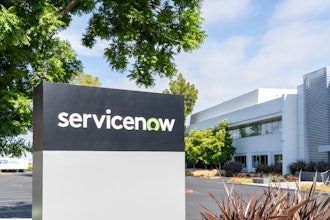
 Doug Fair, COO, InfinityQS International, Inc.
Doug Fair, COO, InfinityQS International, Inc. When companies discuss quality, they tend to associate it with a problem — usually an issue on the plant floor in need of fixing. For instance, an operator may identify that a production line is overfilling bottles of soda, or incorrectly labeling allergens on a bag of potato chips. In response, operators take corrective actions and restart the lines, allowing production to continue as usual.
While many manufacturers use technology to monitor the quality of the products they produce, they don’t always know how to take quality to the next level. Yes, bottles get filled to appropriate levels. And yes, chip bags are appropriately labeled. But simply addressing the immediate quality “problem” is not enough to effectively compete in today’s marketplace. Although important, this micro view of quality is only the first step in obtaining insight into a much bigger quality picture. Luckily, the capabilities already exist for manufacturers to resurrect the data they have collected to gain enterprise-wide visibility that sets in motion companywide global transformation. In turn, this second-life-of-data strategy becomes a competitive business advantage.
Resurrecting Quality Data
Quality data are typically collected on shop floor production lines. But, after alarms are triggered and corrective actions are employed, the overriding belief is that the data have served their purpose. They are no longer needed and are rarely looked at again. These valuable data points die an early death, buried in a database. By ignoring these data as well as those unassociated with alarms, companies are throwing away rich information that can be used to transform operational effectiveness. Resurrecting previously ignored data and using it in its “second life” can prove to be a boon for improving operational effectiveness on a macro scale.
The first life of data exists on the shop floor where operators and inspectors use the data to make machine adjustments, corrections, and fixes. In their second life, shop floor data are aggregated to provide quality visibility across the entire enterprise. In this way, quality issues can be identified at the macro level, allowing management to pinpoint the greatest opportunities for improvement throughout the entirety of their operations.
Leveraging data in its second life by viewing quality across an enterprise is the new paradigm of quality. It is a re-imagination of how quality data can be used to benefit companies on a large scale. It is a proactive method of improving global performance on a macro scale.
Elevate Analysis to a Macro Level
Once resurrected, data can be rolled up at an enterprise level. Here, quality professionals, VPs, and operations managers can slice, dice, and summarize the data. An operations director that oversees 50 plants can compare data across locations and immediately identify the biggest opportunities to reduce costs, improve defect levels, and minimize the probability of product recalls.
Use the Cloud to Connect the Enterprise
It may seem daunting to deploy a quality solution that enables enterprise-wide connectivity. The expense to “rip and replace” equipment in dozens of different plants, upgrade existing hardware, and then roll out new software in each and every line and facility would be exorbitant, wouldn’t it? Not if you don’t have to do it.
By implementing cloud-based enterprise quality management software, existing systems and hardware can be retained. Hosted in the cloud, the software should serve as a centralized repository that accepts data in various formats, from a company’s existing data collection devices. There should be no need to change existing hardware.
Standardization is an additional benefit of using cloud-based systems across multiple plants. Because all data reside in a single repository, it ensures conformity and consistency in naming conventions. This minimizes issues related to informal product designations that may be employed at different facilities. Further, once standardized and collected in a cloud system, the data are available for analysis in real time.
Notably, a cloud-based solution is securely hosted by a vendor that monitors and maintains the systems and infrastructure, thus reducing the impact on IT. As a result, large-scale, multi-plant deployments are fast and easy. Plus, there is no need for on-site software installation or expensive hardware or infrastructure upgrades because everything is managed in the cloud. By logging into the software through a web browser, quality professionals have the ability to break through geographical, cultural, and infrastructural barriers to connect facilities from the United States to China, and everywhere in between.
Improve Global Performance with Operational Insights
The operational insights and enterprise visibility obtained from a connected enterprise ensure that management and C-level executives can identify opportunities to transform global performance and global quality — and do so rapidly. Now, instead of just reacting to an issue, manufacturers can proactively and strategically approach quality initiatives and investments. For example, instantaneously adjusting a production line that is overfilling bottles is great — it ensures a compliant product and reduces costs at that particular plant. But, what if it was possible to look at overfill for all products across all production lines in the enterprise? That level of visibility would allow management to prioritize actions specific to particular plants, production lines, and products where overfill is greatest. In turn, those prioritized corrective actions would result in rapidly reducing overfill, thereby providing the organization with the greatest reduction in costs in a very short period of time. In this scenario, enterprise visibility leads to operational insight, which provides organizations the greatest opportunity to transform global quality and costs.
By using quality data to connect the enterprise and attain end-to-end visibility, organizations can achieve exponential improvements in the quality of their products and in the cost structures of their businesses. The technology is available today to re-imagine quality as an opportunity to transform organizational performance. Quality should no longer be viewed as a problem. Rather, quality data should be seen as an opportunity to dramatically enhance business performance. With the right motivation combined with cloud technology, any manufacturer can capitalize on these opportunities to positively, and quickly, impact its bottom line and establish a lasting competitive advantage.
About the author
Doug Fair is a seasoned quality professional with nearly 30 years of manufacturing, analytics, and statistical application experience. As chief operating officer at InfinityQS International, the global authority on real-time quality and manufacturing intelligence, Fair leverages his experience to drive the company’s overall operational performance.























